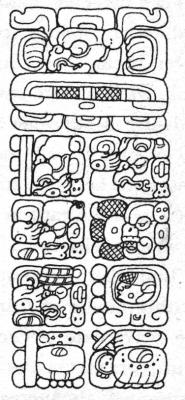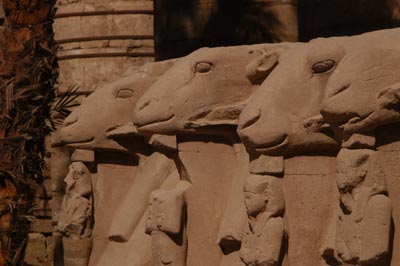 When I was about seven or eight years old, I learned in the playground that the end of the world was coming. The news spread like wildfire from child to child, until panic ensued. The teachers tried to reassure us that it was not going to happen. At the school gates, each waiting parent attempted to do the same. But none of us were convinced. The end of the world was coming; and it would happen at 8pm that very night.
When I was about seven or eight years old, I learned in the playground that the end of the world was coming. The news spread like wildfire from child to child, until panic ensued. The teachers tried to reassure us that it was not going to happen. At the school gates, each waiting parent attempted to do the same. But none of us were convinced. The end of the world was coming; and it would happen at 8pm that very night. This coincided with the closing credits of my mother's favourite television programme. It had been bedtime half an hour before, but my three year old brother and I were in a state of extreme terror. My mother gave up on bedtime and just spent our last half an hour on Earth cuddling her children, while she watched her show. Every now and again, she would repeat the mantra: 'The world's not going to end at 8pm.' I recall, even now, watching the hands on the big clock on the wall count down that final minute. I held my breath, my heart thundering in my chest. My little brother had already burrowed his head right between me and my mother's bodies. As the last minutes expired, I hid my face in my mother's shoulder and held on tightly.
Nothing happened. Nothing continued to happen for a full five minutes, while my mother proclaimed that she was right and it really is bedtime now. The world singularly failed to end from that moment, all the way through the decades, to this. During that time, I've witnessed many 'end of the world' moments, none of which have come to pass. However, we are now living through the biggest.
It seems that the imagination of the world has focussed upon the end of the Maya Long Count. The common statement is that this is also the end of the world. Vacation spots in the Maya world are quickly filling up. Possibly this is due to the fact that people reason that any civilization that can predict it, probably also hid away the secret of surviving it. Any given search engine will produce hundreds of websites, forums, blogs and other media, all staring apprehensively towards December 21st, 2012. Newspapers have devoted miles of print to discussing it. There has even been a Hollywood film dramatizing the alarming events that are believed to be coming on that date.
All over the world, everyone from small children to senior citizens have heard the lore. We are all going to die on December 21st, 2012, because the Maya Long Count will end.
It's time to look at the third of the Maya calendars: the Long Count.
The Long Count
Today's date is 12.19.17.9.14. At least it is according to the Long Count Maya calendar.
Neither of the first two Maya calendars count the years.
 The third one not only counts years, but does so over a vast period of time. This is the Long Count. Scholars have used the available records to show that the latest cycle of the Long Count began, with day zero, on August 11th, 3114 BCE. (Actually, they're still arguing about it, as some reckon it was August 13th, 3114 BCE.) It will end on December 21st, 2012 CE.
The third one not only counts years, but does so over a vast period of time. This is the Long Count. Scholars have used the available records to show that the latest cycle of the Long Count began, with day zero, on August 11th, 3114 BCE. (Actually, they're still arguing about it, as some reckon it was August 13th, 3114 BCE.) It will end on December 21st, 2012 CE. The Long Count, therefore, is a calendar which covers a period of approximately 5,125.36 years. I say 'approximately' because, in order to understand this counting, I'm referring constantly to my own Gregorian calendar. The Maya, of course, didn't. My concept of a year is 365 days, with an extra day slipped into the mix every four years. This is not a calendar that was recognized by the Maya. It didn't even exist back when the Long Count began.
The Maya Long Count didn't start on August 11th or 13th, 3114 BCE. It started on 4 Ajaw, 8 Kumk'u, which is written, in the Long Count, as 13.0.0.0.0. This is illustrated, as a Maya stele, in the picture above. The hieroglyphics, read vertically, say: 13.0.0.0.0, 4 Ajaw, 8 Kumk'u. It is similar carvings, on ancient Maya architecture, that have allowed us to date buildings and historical events.
13.0.0.0.0 (and today's date of 12.19.17.9.14) might look like an IP code, but it's a series of dates clubbed together.
- 0.0.0.0.1 - one day - kin
- 0.0.0.1.0 - 20 days - uinal
- 0.0.1.0.0 - 360 days - tun
- 0.1.0.0.0 - 7,200 days - katun
- 1.0.0.0.0 - 144,000 days - baktun
So today's date is 12 baktun; 19 katun; 17 tun; 9 uinal; and 14 kin. The calendar ends when we reach 13 baktun. That's why the 'start' date of this current calendar begins with 13 baktun. It's because it's not the start of this calendar, it's the end of the last one. On December 21st, 2012, it will happen again. The date will read 13.0.0.0.0; and a new Long Count will begin. December 22nd, 2012, will be 0.0.0.0.1 of the new Long Count.
What Did the Maya Predict Would Happen Then?
I have been hunting in vain for any actual Mayan source that predicts the end of the world. There are many non-Mayan sources whipping people up into a frenzy; but from the Maya themselves there is very little. Most seem to be preparing solely for a huge party, in much the same way as us Gregorian calendar folk do every December 31st.
The very fact that this current Long Count starts with 13 means that there was a previous Long Count. There is nothing in any lore, nor modern day Maya thinking, that suggests that there won't be another.
But Didn't The Maya Look to the Solar System and Predict the End of the World?
Astronomically, the end of the Long Count obviously falls on the date of the Winter Solstice. It also corresponds with the moment when the sun falls into alignment with the Milky Way, as viewed from Earth. This occurs every 26,000 years, marking the end of the Precession of the Equinoxes.

Never heard of the Precession of the Equinoxes? I warrant that you may have heard of the signs of the zodiac. These are based on making a kind of dot-to-dot game amongst constellations of stars that circle around in the night-sky. As we move through the year, we can see the constellation that looks like a ram (Aries), slowly moving along to make room for a constellation that looks like a bull (Taurus). As each month goes by, the Earth continues its journey and the images in the sky pass along; until we've gone an entire year and Aries is once again floating up from the horizon.
This would happen in perfect timing every year, but for one small detail. The Earth wobbles on its axis. We orbit in a bit of an oval, not a circle. This means that, though we see the constellations pass in the same order each year, they are always a tiny fraction later than they were the previous year. After just over 2000 years have passed, they're around a month late. After around 26,000 years, they are 12 months late, so, in effect, we're back to where we started.
While this is the Precession of the Equinoxes, the actual dating tends to note which constellation is in the sky at the time of the Spring Equinox. At the moment, that is Pisces. It is about to change into Aquarius. This will remain the case for roughly 2000 years, before it will change into Capricorn.
One of the major theories about the Long Count is that it was designed to chart the timings between one astrological age to the next (5 x Long Count = 25,626.80 years). If this is true (and it's hotly disputed amongst scholars), then the end of the Long Count will certainly pinpoint the end of the world - but only for the Age of Pisces. It's the coming of the Age of Aquarius.
For ancient star-gazers, these ages were significant enough for rulers and deities to be linked with them. The Age of Pisces has included the growth of Christianity, which is signified by the fish; the age of Aries
 has included an Egyptian dynasty in which many rams were sculptured and the most famous pharaoh was Ramses (and in trying to wipe these deities out, the Christians made an anti-Christ of the ram); the age of Taurus had gods, such as the Egyptian Apis, depicted with bull's horns - the earliest of these pictured twin bulls, as a nod towards the outgoing Age of Gemini - while future age religions placed great store in slaughtering cows and bull-fighting. Presumably the next age will have political and religious leaders scrambling to carry water around, while eating a lot of fish.
has included an Egyptian dynasty in which many rams were sculptured and the most famous pharaoh was Ramses (and in trying to wipe these deities out, the Christians made an anti-Christ of the ram); the age of Taurus had gods, such as the Egyptian Apis, depicted with bull's horns - the earliest of these pictured twin bulls, as a nod towards the outgoing Age of Gemini - while future age religions placed great store in slaughtering cows and bull-fighting. Presumably the next age will have political and religious leaders scrambling to carry water around, while eating a lot of fish. However, if this was definitely the purpose of the Long Count, we might never know. One thing is certain though, the Maya themselves have never said that the world will end.


Did you know you can shorten your long urls with Shortest and earn dollars from every visit to your shortened links.
ReplyDelete